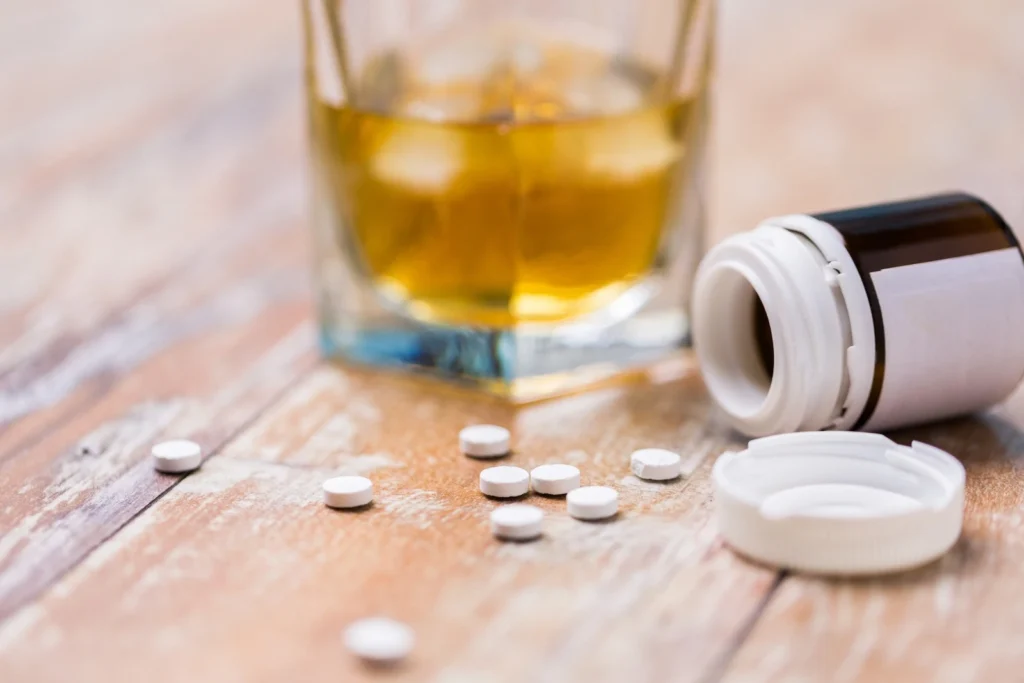Are you or a loved one feeling trapped by Vicodin addiction? The pain of needing Vicodin to get through the day can be overwhelming, affecting your health, relationships, and overall well-being. It’s a tough place to be, but there is hope and a way out.
In this blog, we’ll guide you through understanding Vicodin addiction, recognizing the symptoms, and the short and long-term effects it can have on your life. You’ll learn about the challenges of withdrawal and discover safe and effective ways to manage it. We’ll also explore various treatment options and offer practical coping strategies to help you on your journey to recovery. So, let’s start this journey together towards a healthier, addiction-free life.
Contents
Understanding Vicodin Addiction
Vicodin is a prescription medication that combines hydrocodone, a powerful opioid painkiller, and acetaminophen, a non-opioid pain reliever. It is commonly prescribed to manage moderate to severe pain, such as pain following surgery or injury. Vicodin works by binding to opioid receptors in the brain and spinal cord, reducing the perception of pain and creating a sense of euphoria.
Why is Vicodin Addictive?
 Vicodin’s potential for addiction lies in its hydrocodone component. Hydrocodone stimulates the release of dopamine, a neurotransmitter associated with pleasure and reward, in the brain. This dopamine release can produce feelings of intense well-being and euphoria, which can lead to repeated use to recreate these pleasurable effects. Over time, the brain becomes accustomed to these elevated dopamine levels, leading to tolerance, where higher doses are needed to achieve the same effect.
Vicodin’s potential for addiction lies in its hydrocodone component. Hydrocodone stimulates the release of dopamine, a neurotransmitter associated with pleasure and reward, in the brain. This dopamine release can produce feelings of intense well-being and euphoria, which can lead to repeated use to recreate these pleasurable effects. Over time, the brain becomes accustomed to these elevated dopamine levels, leading to tolerance, where higher doses are needed to achieve the same effect.
Remember, even when taken as prescribed, Vicodin can lead to addiction. Factors that increase the risk include:
- Extended use
- Higher doses
- Genetics, mental health conditions, and a history of substance abuse
Understanding Vicodin addiction is crucial for recognizing the risks associated with this powerful medication. While it can be an effective pain management tool, its potential for addiction should not be underestimated.
Symptoms of Vicodin Addiction
Recognizing the symptoms of Vicodin addiction is key to seeking help and starting the recovery process. Vicodin addiction can manifest in various physical, psychological, and behavioral symptoms. Here’s what to look for in oneself or others:
Physical Symptoms
- Individuals may need higher doses of Vicodin
- Withdrawal Symptoms such as muscle aches, sweating, nausea, vomiting, diarrhea, insomnia, and flu-like symptoms.
- Persistent fatigue, drowsiness, and a lack of energy
- pupils can become noticeably smaller
Psychological Symptoms
- Cravings
- Mood Swings
- Anxiety and Paranoia
- Cognitive Impairment
Behavioral Symptoms
- Seeking prescriptions from multiple doctors
- Ignoring personal, professional, or academic responsibilities
- Withdrawing from social activities and relationships
- Financial problems
- Hiding Vicodin use, lying about the amount taken, or being secretive about activities related to obtaining or using the drug
Recognizing the symptoms of Vicodin addiction is essential for seeking timely help. Whether it’s increased tolerance, withdrawal symptoms, or significant changes in mood and behavior, these signs should not be ignored. If you or someone you know is showing these symptoms, it’s crucial to seek professional help to begin the journey towards recovery.
Short-Term and Long-Term Effects of Vicodin Use
Vicodin, when used as prescribed, can effectively manage pain. However, misuse or prolonged use can lead to significant short-term and long-term effects on both physical and mental health. Understanding these effects can help individuals recognize the risks associated with Vicodin use.
Short-Term Effects
- Pain Relief
- Euphoria:
- Drowsiness and Sedation
- Nausea and Vomiting
- Constipation
Immediate Mental Effects:
- Mental Fog
- Mood Changes
Long-Term Effects
- Tolerance and Dependence
- Liver Damage
- Respiratory Issues
- Chronic Constipation
- Addiction
- Cognitive Decline
- Mental Health Disorders
- Social Isolation
Immediate effects like pain relief and euphoria can quickly lead to tolerance and dependence, while long-term use can result in serious physical and mental health consequences. Recognizing these risks can help individuals make informed decisions about their pain management and seek help if they notice signs of misuse or addiction.
Recognizing Withdrawal Symptoms
Withdrawal from Vicodin, a powerful opioid painkiller, can be challenging and uncomfortable. Here’s a detailed look at the physical and psychological symptoms of withdrawal and the typical timeline.
- Muscle Aches:
- Sweating
- Nausea and Vomiting
- Diarrhea
- Chills and Goosebumps
- Runny Nose and Watery Eyes
- Increased Heart Rate and Blood Pressure
- Fatigue and Insomnia
Withdrawal symptoms typically begin within 6-12 hours after the last dose of Vicodin. Early symptoms include muscle aches, anxiety, and sweating. By the end of the first week, many of the acute physical symptoms start to diminish. Muscle aches and gastrointestinal symptoms may ease, though some discomfort can persist.
Remember, while most physical symptoms will have subsided, psychological symptoms and cravings can continue. This period requires ongoing support and coping strategies to maintain sobriety and prevent relapse.
Therefore, it is very important to understand that withdrawal can be uncomfortable, but it is a critical step towards recovery. If you or a loved one is experiencing Vicodin withdrawal, reach out for professional help to navigate this difficult time safely.
Safe and Effective Withdrawal Strategies

Withdrawing from Vicodin can be a challenging process, but using safe and effective strategies can help manage symptoms and reduce health risks. Here are some key approaches to consider:
Medical Detoxification
Medical detoxification, or detox, is often the first step in safely withdrawing from Vicodin. This process involves clearing the drug from your system while managing withdrawal symptoms under medical supervision. Detox programs typically offer the following:
- Healthcare professionals provide medications to alleviate withdrawal symptoms and ensure your safety throughout the detox process.
- Medications such as buprenorphine or methadone can help reduce withdrawal symptoms and cravings, making the process more manageable.
Tapering Off the Drug
Your doctor will create a tapering schedule based on your current dosage, duration of use, and individual needs. The plan will gradually decrease your dose over weeks or months.
Behavioral and Psychological Support
Withdrawal is not just a physical process; it also involves significant psychological challenges. Incorporating behavioral and psychological support can enhance your chances of successful withdrawal:
- Counseling and Therapy: Engaging in individual or group therapy can provide emotional support, coping strategies, and help address underlying issues related to addiction.
- Support Groups: Joining support groups, such as Narcotics Anonymous (NA), offers a sense of community and shared experiences, which can be incredibly motivating and reassuring.
Healthy Lifestyle Choices
Adopting healthy lifestyle habits can support your body and mind during withdrawal:
- Nutrition: Eating a balanced diet can help replenish nutrients lost during withdrawal and support overall health.
- Hydration: Staying hydrated is essential, especially if you experience symptoms like vomiting and diarrhea.
- Exercise: Regular physical activity can boost your mood, reduce anxiety, and improve sleep.
Managing Vicodin withdrawal safely and effectively requires a comprehensive approach. Combining these strategies with psychological support and healthy lifestyle choices can help you successfully navigate the withdrawal process and set the foundation for long-term recovery.
Conclusion
Quitting Vicodin can be a difficult and daunting journey, but with the right strategies and support, it’s entirely possible to break free from addiction. Understanding the symptoms, effects, and safe withdrawal methods is crucial for a successful recovery. Remember, you don’t have to do this alone—professional guidance and support can make all the difference.
At QuitMantra, we offer comprehensive de-addiction programs designed to help you or your loved ones navigate the path to recovery. Our expert team provides personalized treatment plans, medical supervision, and ongoing support to ensure a safe and effective withdrawal process.
Take the first step towards a healthier, addiction-free life by booking a trial session with QuitMantra today. We’re here to support you every step of the way. Visit our website to schedule your session and start your journey to recovery.
